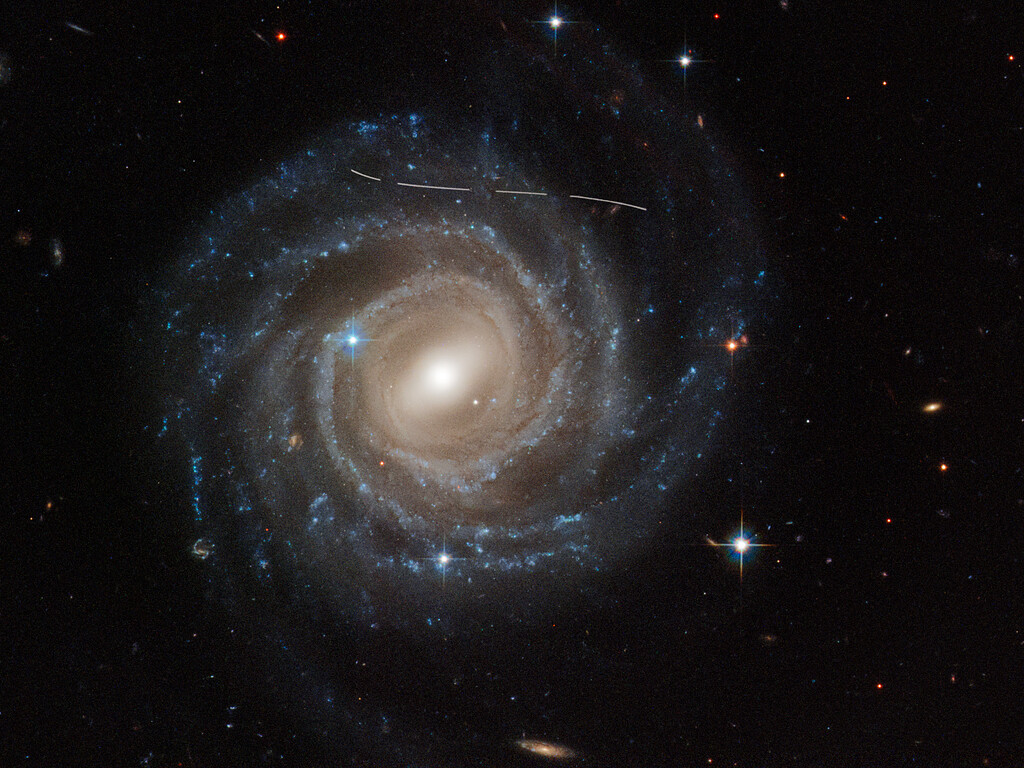Asteroid photobombs Hubble's observation of majestic spiral galaxy

This NASA/ESA Hubble Space Telescope image shows a majestic galaxy named UGC 12158. A slightly S-shaped white line across the top is the image of an asteroid streaking across the telescope's view, photobombing the observation of the galaxy.
The streak, which at first glance might seem like a scratch or a mark made with a white pen, is actually a combination of time exposures capturing a foreground asteroid as it moved through Hubble's field of view. Due to parallax - an effect stemming from Hubble's orbit around Earth - the asteroid's path appears curved, giving the impression that the asteroid is “swimming” along a curved trajectory.
The asteroid in this Hubble image is situated within our solar system's asteroid belt and hence is 10 trillion times closer to the telescope than the background galaxy. It was observed as part of an asteroid-hunting project, which required pursuing 37,000 Hubble images spanning 19 years.
As Hubble orbits Earth, its changing perspective, combined with the known positions of the asteroids moving along their orbits, allows scientists to accurately measure the streaks left by these asteroids in the telescope's field of view. By knowing Hubble's position during the observation and measuring the curvature of the streaks, scientists can determine the distances to the asteroids and estimate the shapes of their orbits.
Most of the asteroids captured under this survey reside in the main belt, located between the orbits of Mars and Jupiter. Hubble's sensitive cameras measure their brightness, and by comparing this brightness with their distance, scientists can estimate their sizes. The dimmest asteroids observed are about one forty-millionth as bright as the faintest star visible to the human eye.
"Asteroid positions change with time, and therefore you cannot find them just by entering coordinates, because at different times they might not be there. As astronomers we don’t have time to go looking through all the asteroid images. So we got the idea to collaborate with more than 10,000 citizen-science volunteers to peruse the huge Hubble archives," said co-author Bruno Merín of the European Space Astronomy Centre in Madrid, Spain.
This Hubble image might look like it got marked up with white pen, but it's actually a photobombing asteroid's trail as it moves through Hubble's field-of-view!These sorts of observations help get a census of the asteroid population in our solar system: https://t.co/to8zOExd1q pic.twitter.com/qboobpjYhy
— Hubble (@NASAHubble) April 18, 2024
- READ MORE ON:
- Hubble Asteroid photobomber
- Hubble Space Telescope
- asteroids










